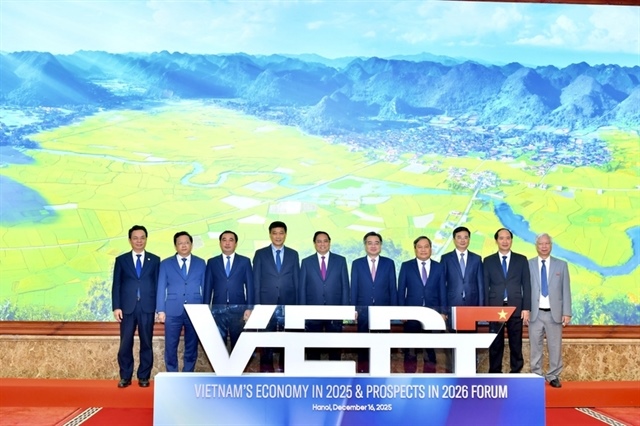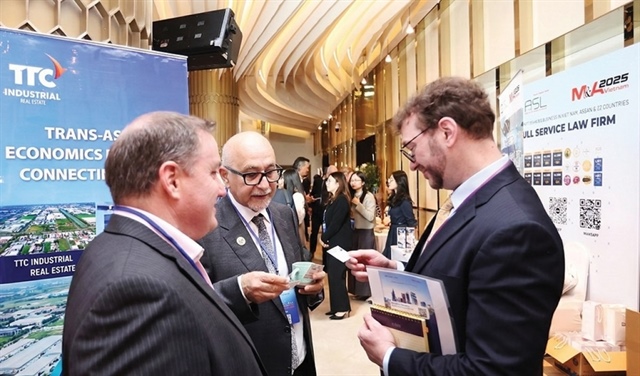AEC a catalyst for reform in Việt Nam
AEC a catalyst for reform in Việt Nam
The year 2017 marks an important milestone for the Association of South East Asian Nations (ASEAN): the 50th anniversary of its establishment. For half a century, ASEAN has being growing strongly, recording significant achievements on the way.

Economically, ASEAN has moved from a less developed region to a much more prosperous and dynamic region and become a global trade and investment hub. This is reflected in the establishment of the ASEAN Economic Community (AEC) at the end of 2015 as one of three key pillars of the grouping.
The AEC is an initiative to transform ASEAN into a single market and production base, allowing free movement of goods, services, investment, skilled labour, and a freer flow of capital. It will help promote member nations’ presence in the global production and value chain, and allow them to enjoy more benefits from regional trade and investment.
In general, the implementation of commitments to build the AEC has brought about many benefits to the Vietnamese economy.
Opportunities
The creation of a single market of 630 million consumers - half of them under 30, presents a huge economic opportunity. ASEAN General Secretary Le Luong Minh said that the group has a combined gross domestic product of nearly US$2.6 trillion, which makes it the sixth largest economy in the world and the third in Asia, only after China and India.
Since Viet Nam signed the ASEAN Free Trade Agreement (AFTA), ASEAN has become Viet Nam’s second trading partner, with an average growth rate of 14.5 per cent over the past decade. Two-way trade between Viet Nam and ASEAN has grown from about US$19 billion in 2006 to $41.36 billion in 2016.
As a result, ASEAN is Viet Nam’s third largest market and also the third largest supplier of goods and raw materials for production of Vietnamese businesses.
ASEAN is also an important source of FDI in Viet Nam with total registered capital rising by 116 per cent in the 2006-2016 period to $64 billion, accounting for 18 per cent of total FDI inflow. ASEAN is also the bridge for many investments from multinational companies located in the region.
Still, the opportunity brought by the AEC is not just the ability to access ASEAN markets, but also the markets outside the grouping, like China, Japan, South Korea, India, Australia and New Zealand, through separate free trade agreements (FTAs) between ASEAN and each of these partners. The market will be much larger and more attractive when the Regional Comprehensive Economic Partnership (RCEP), under negotiation now, is established in near future. Trade and investment flows between ASEAN and EU and the United States are also crucial for both sides.
The removal of tariffs and non-tariff barriers under the free trade agreements will enable businesses to cut cost of imports, lower production costs, increase competitiveness, and boost exports.
In addition, with the advent of the AEC, the grouping, including Viet Nam, has become an attractive destination for foreign direct investment. Vietnamese businesses with large financial capacities also have a chance to expand their investment to other ASEAN member states. Over the past few years, Viet Nam has witnessed large national corporations venturing abroad, like Viettel, Vinamilk, BIDV and FPT.
Challenges
However, it should be noted that the establishment of the AEC at the end of 2015 does not mark an end to the ASEAN integration process. ASEAN’s AEC Blueprint 2025 sets out broad, extensive economic directions and strategic measures to be taken over the next decade, with a focus on economic integration. It won’t be an easy task. Deeper and wider integration into the AEC in the coming period means more challenges for Viet Nam. It means more work needs to be done.
Challenges first come from the awareness of Vietnamese business communities. In a recent conference on the AEC and opportunities for Vietnamese businesses, a representative of Economic Research Institute for ASEAN and East Asia (ERIA) said that some surveys showed that only about 16 per cent of enterprises actually understood the AEC.
Businesses can only take advantage of the AEC when they actually join the ASEAN market and become real players, according to the representative. Businesses are not just beneficiaries but also participants who set the rules and take the initiative to play a greater role in shaping ASEAN and the AEC for their own benefit.
More importantly, Vietnamese firms may lose their competitiveness against rivals in the bloc in terms of product quality and market due to the economy being based on cheap labour, exploitation of natural resources and low technology.
A single market and production base means that other ASEAN companies also have the same opportunities to access the huge market, not to mention the fact that ASEAN countries have comparative advantages similar to those of Viet Nam, leading to similarities in the export structure of many ASEAN members.
Therefore, without investment in human resources and innovation to produce high-quality products and services, Vietnamese firms will lag behind in competition with regional rivals in not only the domestic market, but also in the markets of fellow ASEAN members.
In fact, only 25 per cent of Vietnamese exports to ASEAN market can get the important certificate of origin (C/O) under AFTA requirements, which leads to low utilisation of the Common Effective Preferential Tariff (CEPT) regime. The percentage has increased from 8 per cent in 2007, but remains low. The CEPT is the mechanism by which tariffs on goods traded within the ASEAN region, which meet a 40 per cent of ASEAN content requirement, will be reduced to 0-5 per cent.
Looking forward
To adopt a positive perspective, the pressures mentioned will force the Vietnamese Government and businesses to change their mindsets and enhance their performance.
Vietnamese firms should shift from “price competition” to “non-price competition”, taking into serious account factors like quality, brand name and supporting services to produce more value-added complementary goods and differentiated goods.
They should increase awareness of international agreements and commitments as well as Government’s policies so that they can make timely adjustments to production and business plans.
ASEAN commitments demand Viet Nam to improve its own market institutions in compliance with international economic integration, minimise adjustment costs, macroeconomic instability and social risks during integration process.
Integration is more than just eliminating all barriers. As it eventually seeks to enhance socio-economic development, the integration process should incorporate adjustment in a way that improves people’s participation.
ASEAN has proved its vital importance to Viet Nam and the AEC is a work-in-progress. Still, Viet Nam also has to confront several common issues in the region to further economic integration while addressing its own problems as a low middle-income economy. These problems have persisted for quite some time. In this regard, the successful integration experience over the past several years is just a start. The country has room for more meaningful integration.
Viet Nam is at a decisive point in time when it comes to transforming its development patterns and accelerating its transition to a market-oriented economy. Completing AEC tasks can be seen as a catalyst for needed reforms.





















